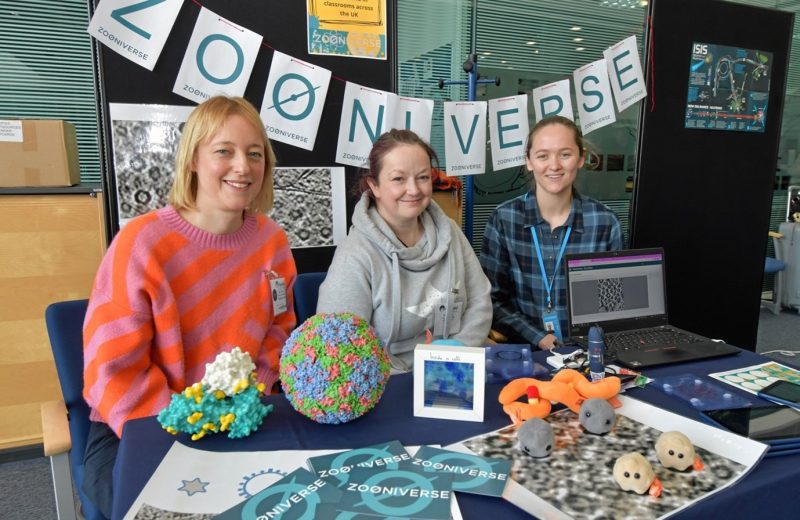How do we deal with the huge quantities of data collected by state-of-the-art equipment at the Franklin? By automating the tasks that would take researchers months or years to carry out manually. But even training a machine learning algorithm can require a lot of data – that’s where citizen scientists come in.
People-powered research, or citizen science, is the participation of non-experts in scientific research. From burying tea bags to understand the carbon cycle, to submitting photos of clouds to the Globe Observer project, there are countless ways to get stuck into science. At the Franklin, we combine citizen science with artificial intelligence to produce algorithms that we hope will accelerate scientific discovery.
Machine learning algorithms often need to be trained using ‘ground truth’ data, or ‘gold standard’ data produced from expert annotations. But even producing these expert data sets can be too time consuming to be productive – taking weeks or months. This means the training datasets that are used are small, limiting the scope over which the trained algorithm can be applied.
By harnessing the power of the crowd, citizen science can help produce much bigger, broader training datasets for these algorithms – meaning they can be used for more varied data. And the good news is that the quality won’t be impacted either. When multiple non-experts perform the same task, the combined consensus from the ‘crowd’ can be just as good as that of an expert. This means an insurmountable workload for an individual researcher can be divided up into manageable pieces that can be worked on by a much larger number of citizen scientists.
The Franklin runs a series of citizen science projects under the “Science Scribbler” moniker on the Zooniverse platform. These projects, headed by Science Director for AI&I Mark Basham, have already had a big impact:
“Making the public aware of the work we are doing has always been something I passionately believe in, from inspiring future generations of scientists and engineers, to explaining how and why we undertake the research we do with public money. One of the significant challenges that I need to address is understanding images of complex scientific data, which is immensely challenging and time consuming, even with the amazing advances in Artificial Intelligence over the last few years. Citizen science has allowed us to bring these two things together in an amazing way, by working with a community of engaged citizens, who don’t just understand the science we are doing, but are using their amazing visual abilities to actively participate, helping us to address challenges which are simply impossible without the ‘crowd’.”

Participation within the Science Scribbler projects is not just limited to active projects; Science Scribbler: Virus Factory now forms part of a series of ‘Zooniverse in Schools’ workshops for primary age students, delivered by a team at the University of Oxford. Most recently, Science Scribbler: Virus Factory was taken to the Diamond Light Source open day, to introduce members of the public to how data collected at Diamond has been used in our citizen science projects.
Right now, there are two Science Scribbler projects actively collecting data. To read more about these projects, or any completed Science Scribbler projects, check out Science Scribbler on the Zooinverse.